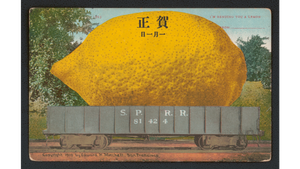Some days you just wake up feeling curious about the world. Today is one of those days, and I am so happy to be able to share my curiosity with you.
SCOPE CREEP.
- PSA: I will be in the San Francisco Bay Area next week, and am holding a casual meetup of SOW's Members-and-Supporters one week from today, in the evening, in Oakland, California! Details were in the Members-and-Supporters-only email that went out last Friday; if you missed it, or if you were just about to sign up as a Member-or-Supporter right now, hit 'reply' to this email and I'll fill you in on the logistics 🔜
- The foremost meaning of Byzantine, with a capital B, relates to the Byzantine (Eastern Roman) Empire, which was centered in Constantinople (now Istanbul) and existed from the fifth to the fifteenth centuries CE. I know very little about the Byzantine Empire; I did not know, for instance, that the word "Byzantine" was coined after the empire's fall, and that its subjects were in fact known as Romans until the early modern period. I was aware, though, that byzantine (with a lowercase b) is often used to describe things that are overly ornate, or complicated, or difficult to understand, or obscure.
During a recent conversation with the SOW Members' Reading Group, Matt mentioned that he was listening to an audiobook on the history of the Byzantine Empire. I did not take note of the book's title, but I did take note when he mentioned as an aside that he tries to always have some kind of (lowercase) byzantine history to listen to: something that is at minimum a little obscure, and potentially complicated, and maybe not all that riveting—but worth keeping on the back burner nonetheless. All of which is to say that I finally started listening to James C. Scott's Seeing Like a State last week, and I'm looking forward to learning a LOT about the byzantine aspects of Tanzanian farming ;) - Re: My profile of photographer Christopher Payne: A reader commented that I might look at the work of Walter Nurnberg, which is in the same vein as Alfred Palmer and therefore also Christopher Payne. Getty Images has a very extensive (watermarked) collection of Nurnberg's photography, and here's a brief biography. Nurnberg was born in Berlin in 1907, moved to London in 1934, and sometimes used 5-kilowatt tungsten lights to create extremely high-contrast photographs. Check out his 1961 Mill workers lift large bales of Esparto Grass used in paper production, and 1966's Two men shape a large steel disc in a dishing press, and 1953's Still life study of printers showing lead type in boxes (noting that, as I believe I mentioned here recently, the trays that hold type during typesetting are called galleys).
- An academic paper on cacio e pepe, and how the addition of cornstarch aids in the development of a creamy, homogeneous sauce. "For a practical example, consider preparing Cacio and pepe for two hungry people. This typically requires 240 grams of pasta (tonnarelli is preferred, though spaghetti or rigatoni also works well) and 160 grams of cheese. Traditionalists would insist on using only pecorino, but some argue that up to 30% Parmesan is acceptable, though this remains a point of debate. To achieve the correct starch ratio, 4 grams of starch is optimal for 160 grams of cheese."
- A good, and slightly silly, video of rock climbing legend Adam Ondra making his own indoor climbing holds.
- Imagine you're standing in a long hallway, and you're looking towards one end of the hallway. At the end of the hallway is a doorway. Maybe you're in a church, or a gothic cathedral, because the top of the doorway is a peaked arch. The door is almost as big as the hallway, so the top of the peaked arch is almost at the ceiling, and there isn't a ton of room between the sides of the door and the walls to your left and right. If you took away everything except the wall that the doorway is in, it would look almost like two right triangles, with their hypotenuses running along the left and right sides of the peaked arch.
These (roughly) triangular spaces have a name: They are spandrels. Spandrels can also be formed above round arches, or really in any space between the corner of a square and a circle that is inscribed within the square. Spandrels are often decorated. A few times a week I walk or bike past the Soldiers' & Sailors' Arch at Grand Army Plaza; its spandrels, like the spandrels on the Washington Square Arch, are decorated with depictions of Winged Victory.
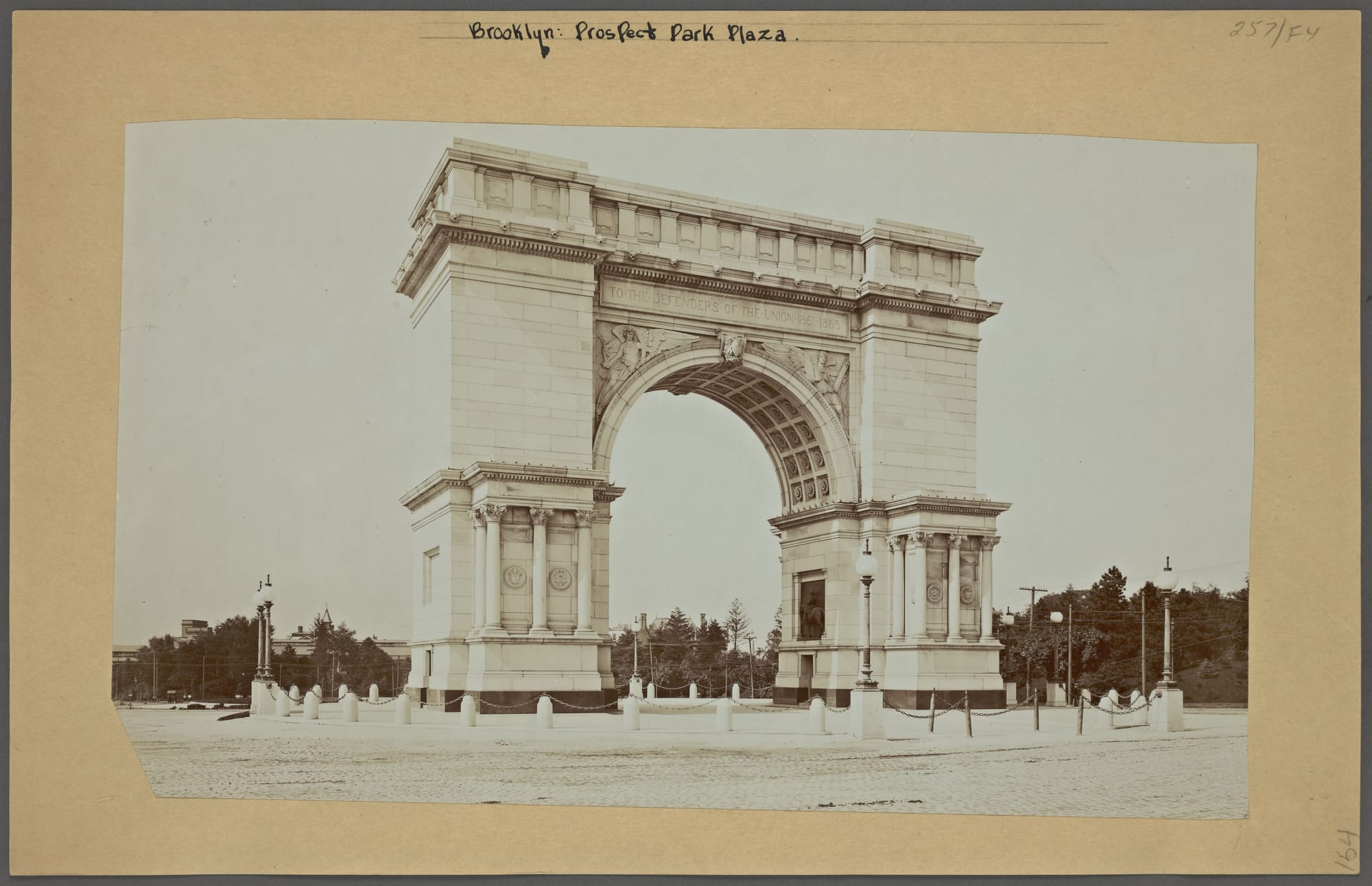
Charles R. Flint was born in Maine, in 1850. He went to Brooklyn Polytechnic, then entered shipping (his family's business) and eventually became a financier and something of an early-twentieth-century arms dealer—later lamenting, rather passively, that "most of our soldiers killed in Europe during the World War were killed by American inventions"—inventions which Flint had a direct role in supplying.
(As a serious aside: Flint's first firm, Gilchrist, Flint & Co, was eventually absorbed into what would become W. R. Grace & Company. I'm aware of Grace for two reasons: First, their former headquarters, on 42nd Street between Fifth and Sixth avenues, is no joke one of the first buildings I was able to identify in New York City. Second, Grace is still the listed brand name on the various waterproofing products made by GCP—including Bituthene, which I spent a very cold winter applying to the stone-clad exterior walls of William Pedersen's house in Shelter Island.)
Back to Flint: When he was forty-two he engineered the formation of the US Rubber Company, but his tenure there was less than a decade long and if I'm reading the literature correctly it seems like in the end, he might have stiffed US Rubber out of roughly sixteen million (2024) dollars. Either way, according to Glenn Babcock's History of the US Rubber Company, "Flint had no official connection with United States Rubber after 1901." Ten years later, Flint engineered the formation of C-T-R, a consolidation of manufacturers of tabulating and record-keeping equipment. In the early years C-T-R made automatic time clocks and cash registers. It would later take the name of one of its constituents, IBM.
Flint believed vociferously in industrial consolidation, writing in 1921 that "The United States has its industrial future to defend...We must in some way make up for the great difference between the low wages of these [unnamed] countries and the high wages paid in America...Since tariffs alone cannot solve the problem, we must meet such foreign competition in greater degree than ever by lower unit costs through industrial consolidation, industrial relocation and standardization." His promotion of industrial relocation wouldn't play all that well in 2024, and overall Flint's legacy seems somewhat mixed. This article describes how IBM's longtime leader, Tom Watson Sr., doesn't seem to have held Flint in particularly high esteem. It also includes a reference to Flint's efforts to form "an electric world-trust," which was thwarted by none other than Thomas Edison himself.
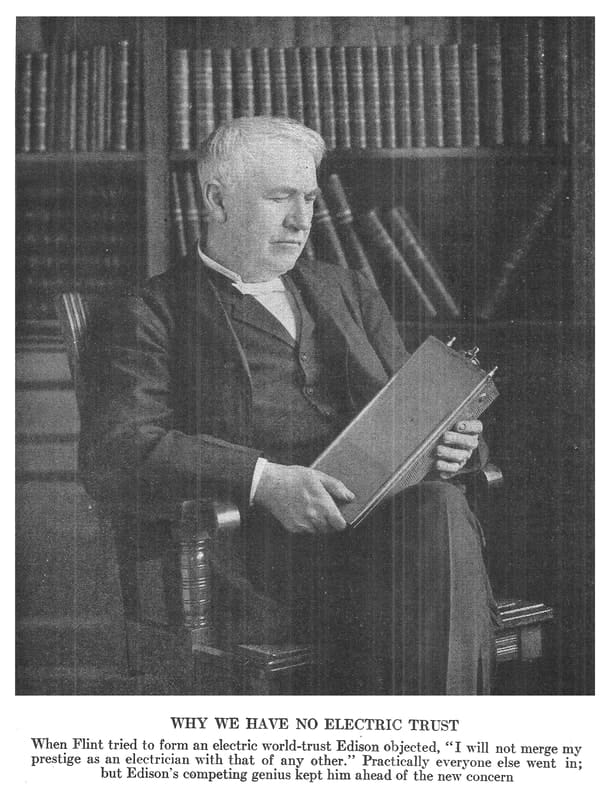
- A new law in Vietnam raised the fines for traffic violations by a factor of ten; compliance, unsurprisingly, skyrocketed 👏
- Some old computers:
- A pretty good video explainer of MONIAC (aka the Phillips Machine), which uses the flow of water to model the macroeconomic flow of money.
- A 1948 video of UCLA's mechanical differential analyzer. "The integrator wheel is a vital part of this mechanized supermind, which can solve almost anything from the fourth dimension to the family budget."
- A video of a simple mechanical integrator made out of 8020, a leadscrew, and some 3D printed parts.
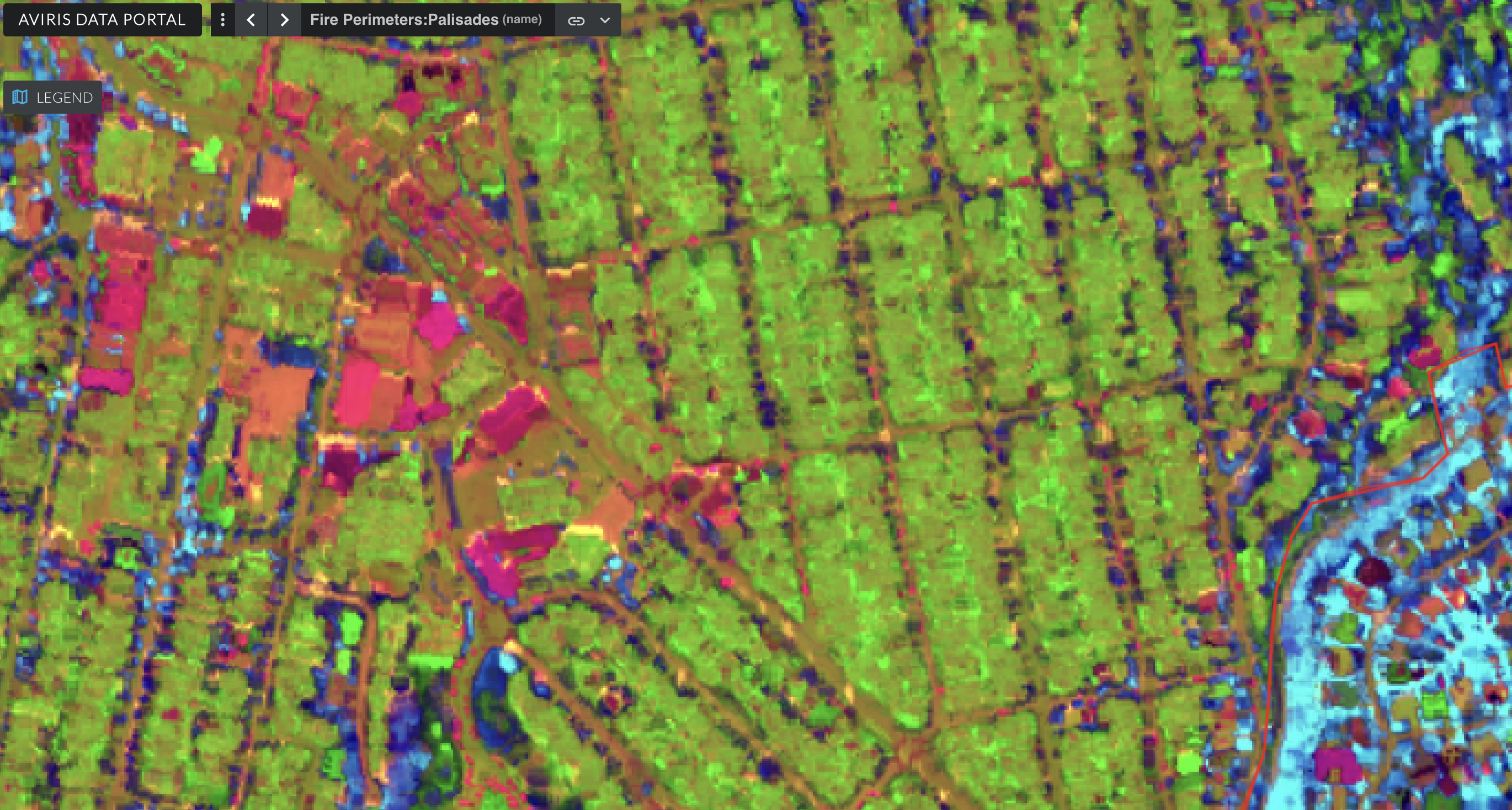
As I write this, Cal Fire estimates that over sixteen thousand structures have burned in the fires in Southern California this year; this is up from about twelve thousand structures when I wrote about the topic two weeks ago. After I did so, a reader wrote in to note that Cal Fire often includes vehicles in their initial assessments of structures burned, and this article explains why this might be the case. It turns out that early fire damage assessments are often made by wide-angle infrared spectrometers, mounted to the undersides of a Beechcraft B200 twin-turboprop airplane. The airplane, which is owned by NASA, flew over the affected areas collecting images, which you can see in JPL's AVIRIS Data Portal. "Officials examined the images and excluded any that appeared to be vehicles, [a spokesman for Cal Fire] said — for example, if it was clearly in a driveway, or along the side of a road where there were no homes. Sixteen teams are examining the damage from the ground and will conclusively determine how many structures were destroyed before reaching a final count, which will not include vehicles."
The spectrometer itself, dubbed AVIRIS-3, was adapted from a similar spectrometer which is currently in use on the International Space Station. From 2017 to 2023, AVIRIS was used to capture data on 303,794 square kilometers (an area roughly the size of Arizona) in the arctic and boreal forests in Alaska and Canada. Back in the Data Portal, you can see that AVIRIS has scribbled its way across nearly all of the State of California—a dubious honor.
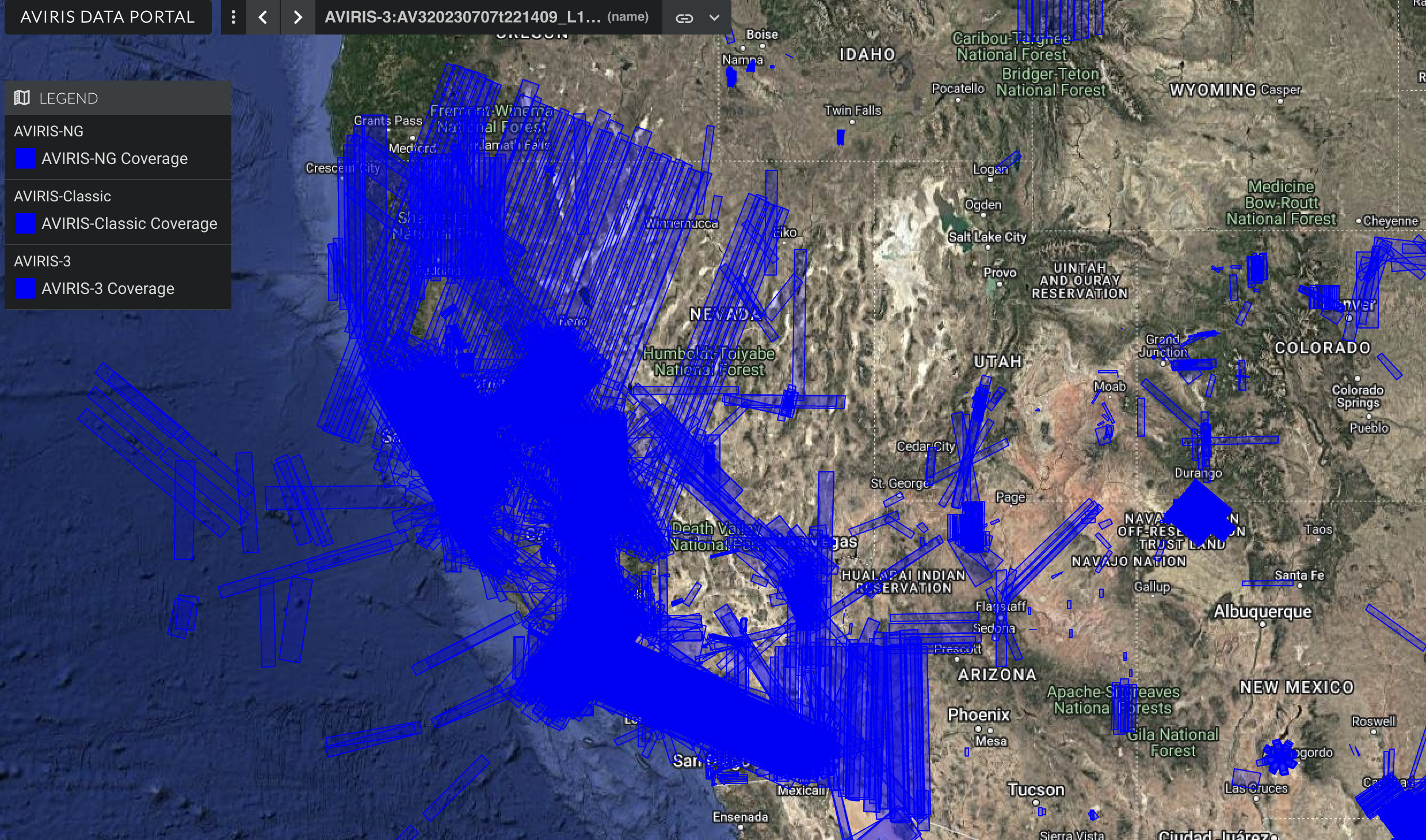
- A good salmon identification chart, showing distinctive body features during both ocean and spawning phases. During their ocean phases, some species can be difficult to distinguish, but note the tails: Chinook tails have silvery streaks and are spotted all over; Coho have silvery streaks but no spots; Pink have oval spots and no silver. Related: The jaw hook that some species grow during their spawning phase is called a kype.
- Lentils are legumes, and grow in pods. Once they're removed from their pods, lentils are cleaned, de-stoned, and graded by size. They are then rolled between a pair of stones, removing their hulls (these can be ground down and used for their fiber content) and exposing the seed (called a "football"); you can see these constituent parts here. The seeds are then soaked in oil for twelve hours and in water for an additional six, after which they're split (via an "emery roll that rotates with high speed to cut and rub the bean bran continuously") and polished (via brushes and, apparently, leather straps).
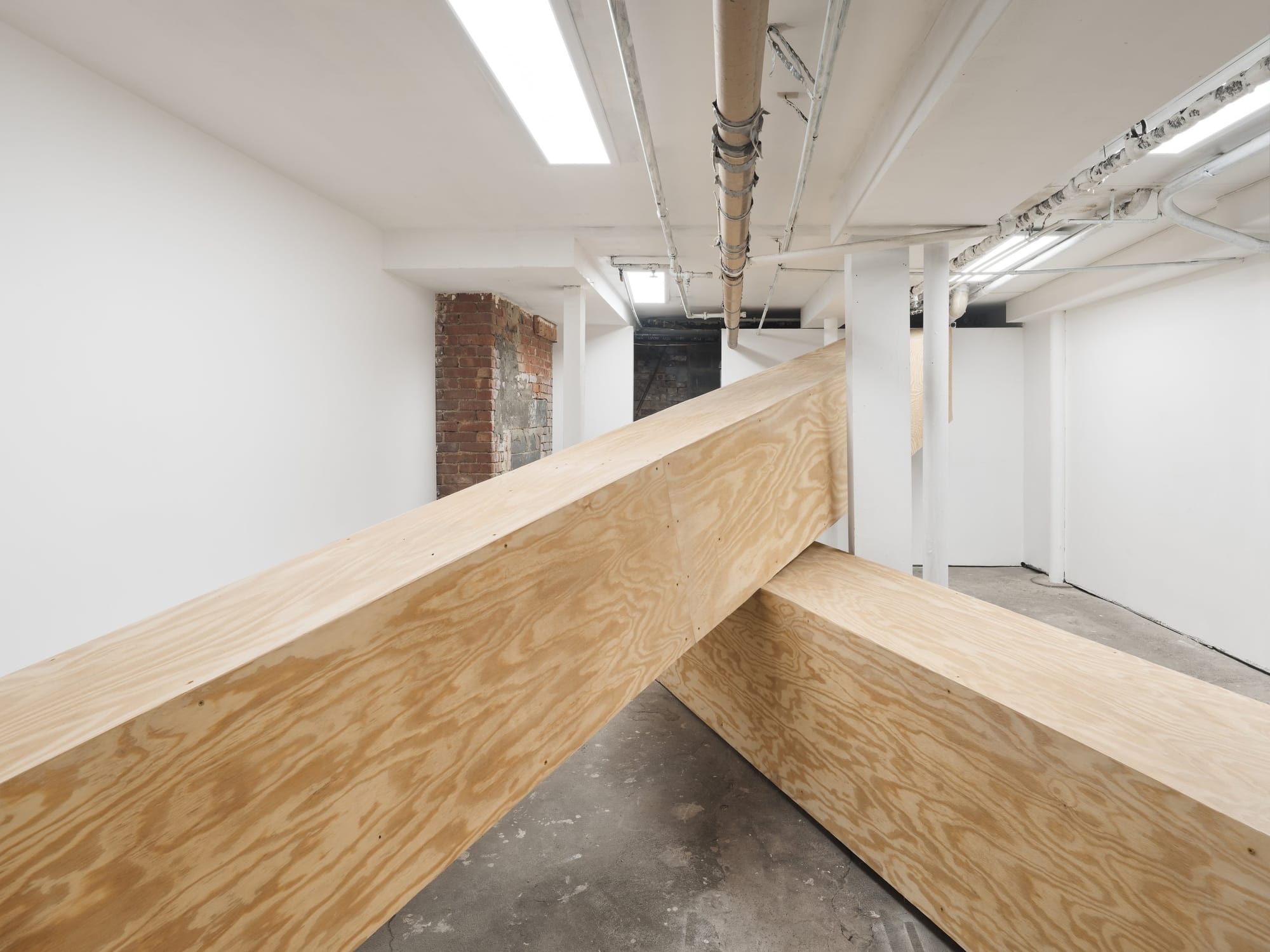
If you're in NYC this weekend and looking for arts and culture, none other than the New York Times suggests that you make a trip to Parent Company, the Chinatown art gallery run by my brilliant wife. The show on display now, Wet Blanket, is immersive, and vaguely infrastructural, and is running through Saturday, 2025-02-08.
Tangentially related: I've found myself building a mental list of my favorite rooms in New York City, which has led to some reflection about where, and how, I choose to spend my time. My draft list is below, and I'd love your thoughts on transcendent rooms to add to it; please submit nominations by commenting at the bottom of this post.
- I find the Temple of Dendur, at the Met, to be utterly transporting and beautiful; visiting it is one of my top recommendations for locals and tourists alike. This article describes its recent conservation well, for those who may be interested.
- The Frank Lloyd Wright room, also at the Met, is particularly pleasant in the afternoon during the colder part of the year, when the sun is low.
- So much of parenting is just confirming whether or not your own childhood memories hold up; in my experience one memory that does hold up is my fondness for the Hall of Ocean Life, aka the Blue Whale Room, at the American Museum of Natural History. I recommend visiting this room after you've been at the museum for an hour or two, when you might need to sit down for a while; earlier this month I spent about a half hour laying on the ground under the whale, and loved every minute of it.
- I am a complete sucker for the dining room at Diner, an institutional restaurant in South Williamsburg; this 2019 profile both explains and shows a bit of the restaurant.
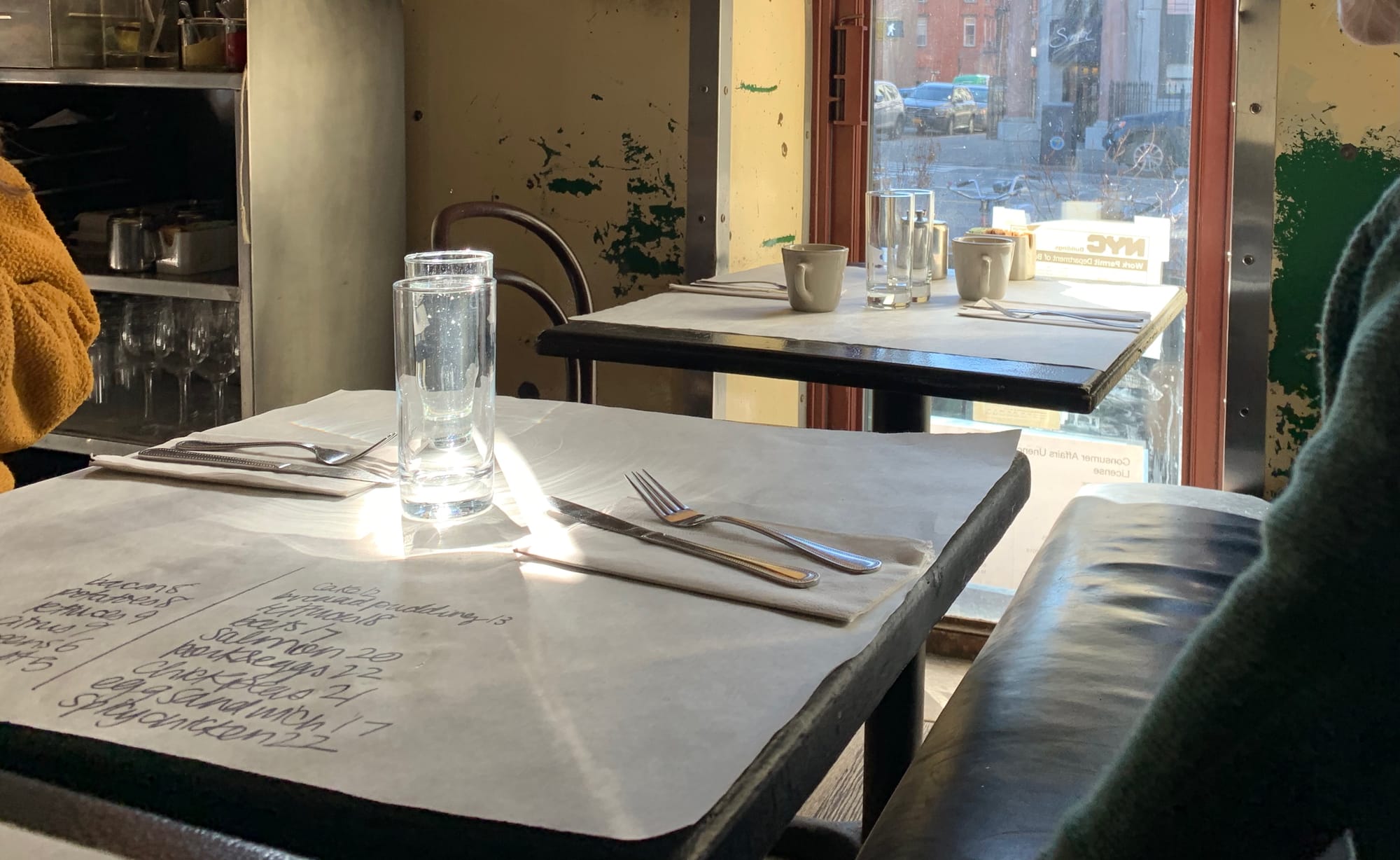
- A crab canon is like a palindrome for music.
- I’ve been listening to Nils Frahm’s Paris (Bandcamp link, Spotify link) and Kali Malone’s The Sacrificial Code (Bandcamp link, Spotify link).
Thanks as always to Scope of Work’s Members and Supporters for making this newsletter possible. Thanks also to Mike and Noah for helping source links this week.
Love, Spencer


